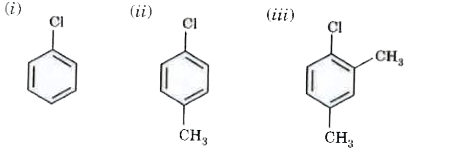STATEMENT -1: Rate of Nucleophillic addition of p- Nitrobenzaldehyde is faster then p- Methoxybenzaldehyde
STATEMENT -2: Presence of electron withdrawing group increases rate of Reactionn in carbonyl compound for Nuclephillic reaction.
The correct Answer is:(A)
To evaluate the statements given in the question, we will analyze each statement step by step.
Step 1: Understanding the Structures
- Para-Nitrobenzaldehyde: This compound has a nitro group (-NO2) at the para position relative to the aldehyde group (-CHO).
- Para-Methoxybenzaldehyde: This compound has a methoxy group (-OCH3) at the para position relative to the aldehyde group.
Step 2: Analyzing the Effect of Substituents
- Electron-Withdrawing Groups (EWGs): The nitro group is an electron-withdrawing group. It pulls electron density away from the benzene ring and the carbonyl carbon, making the carbonyl carbon more electrophilic (more positive). This increases the rate of nucleophilic addition.
- Electron-Donating Groups (EDGs): The methoxy group is an electron-donating group. It donates electron density to the benzene ring and the carbonyl carbon, making the carbonyl carbon less electrophilic. This decreases the rate of nucleophilic addition.
Step 3: Comparing the Rates of Nucleophilic Addition
- Since para-nitrobenzaldehyde has an electron-withdrawing nitro group, it will undergo nucleophilic addition faster than para-methoxybenzaldehyde, which has an electron-donating methoxy group.
Conclusion for Statement 1
- Statement 1 is True: The rate of nucleophilic addition of para-nitrobenzaldehyde is indeed faster than that of para-methoxybenzaldehyde.
Step 4: Evaluating Statement 2
- Statement 2: The presence of an electron-withdrawing group increases the rate of reaction in carbonyl compounds for nucleophilic reactions.
- This statement is consistent with our previous analysis. Electron-withdrawing groups increase the electrophilicity of the carbonyl carbon, thus enhancing the rate of nucleophilic addition.
Conclusion for Statement 2
- Statement 2 is True: The presence of an electron-withdrawing group does increase the rate of nucleophilic addition reactions in carbonyl compounds.
Final Conclusion
Both statements are true.
---
- Para-Nitrobenzaldehyde: This compound has a nitro group (-NO2) at the para position relative to the aldehyde group (-CHO).
- Para-Methoxybenzaldehyde: This compound has a methoxy group (-OCH3) at the para position relative to the aldehyde group.
- Electron-Withdrawing Groups (EWGs): The nitro group is an electron-withdrawing group. It pulls electron density away from the benzene ring and the carbonyl carbon, making the carbonyl carbon more electrophilic (more positive). This increases the rate of nucleophilic addition.
- Electron-Donating Groups (EDGs): The methoxy group is an electron-donating group. It donates electron density to the benzene ring and the carbonyl carbon, making the carbonyl carbon less electrophilic. This decreases the rate of nucleophilic addition.
- Since para-nitrobenzaldehyde has an electron-withdrawing nitro group, it will undergo nucleophilic addition faster than para-methoxybenzaldehyde, which has an electron-donating methoxy group.
- Statement 1 is True: The rate of nucleophilic addition of para-nitrobenzaldehyde is indeed faster than that of para-methoxybenzaldehyde.
- Statement 2: The presence of an electron-withdrawing group increases the rate of reaction in carbonyl compounds for nucleophilic reactions.
- This statement is consistent with our previous analysis. Electron-withdrawing groups increase the electrophilicity of the carbonyl carbon, thus enhancing the rate of nucleophilic addition.
- Statement 2 is True: The presence of an electron-withdrawing group does increase the rate of nucleophilic addition reactions in carbonyl compounds.
Both statements are true.
Topper's Solved these Questions
- CARBONYL COMPOUNDSBOOK - NARAYNACHAPTER - CARBONYL COMPOUNDSEXERCISE - LEVEL -VI
99 Videos
- CARBONYL COMPOUNDSBOOK - NARAYNACHAPTER - CARBONYL COMPOUNDSEXERCISE - LEVEL -II (H.W)
20 Videos
- BENZENEBOOK - NARAYNACHAPTER - BENZENEEXERCISE - Level-6
121 Videos
- CHEMICAL BONDING AND MOLECULAR STRUCTUREBOOK - NARAYNACHAPTER - CHEMICAL BONDING AND MOLECULAR STRUCTUREEXERCISE - EXERCISE -4
54 Videos
Similar Questions
Knowledge Check
Increasing rate of SN1 reaction in the following compounds is
 A(I)<(II)<(III)<(IV)B(II)<(I)<(III)<(IV)C(I)<(II)<(IV)<(III)D(II)<(I)<(IV)<(III)
A(I)<(II)<(III)<(IV)B(II)<(I)<(III)<(IV)C(I)<(II)<(IV)<(III)D(II)<(I)<(IV)<(III)Arrange the compounds in increasing order of rate of reaction towards nucleophilic substitutions.
 A(i)<(ii)<(iii)B(ii)<(i)<(iii)C(iii)<(ii)<(i)D(i)<(iii)<(ii)
A(i)<(ii)<(iii)B(ii)<(i)<(iii)C(iii)<(ii)<(i)D(i)<(iii)<(ii)Arrange the compounds in increasing order of rate of reaction towards nucleophilic substitutions.
 A(i)<(ii)<(iii)B(iii)<(ii)<(i)C(i)<(iii)<(ii)D(iii)<(i)<(ii)
A(i)<(ii)<(iii)B(iii)<(ii)<(i)C(i)<(iii)<(ii)D(iii)<(i)<(ii)
Arrange the following compounds in increasing order of rate of reaction towards nucleophilic substitution :

View SolutionArrange the following compounds in increasing order of rate of reaction towards nucleophilic substitution :

View SolutionWhich carbonyl group of the given compound is most reactive for nucleophilic addition reaction ?

View SolutionAssertion : p-nitroaniline is stronger base than p-toluidine .
The electron withdrawing NO2 group in the p-nitroaniline makes it a stronger base .
View SolutionAssertion : p-Nitrophenol is a stronger acid than p-cresol.
Reason : NO2 group is an electron withdrawing group while CH3 group is electron releasing in nature.
View Solution

